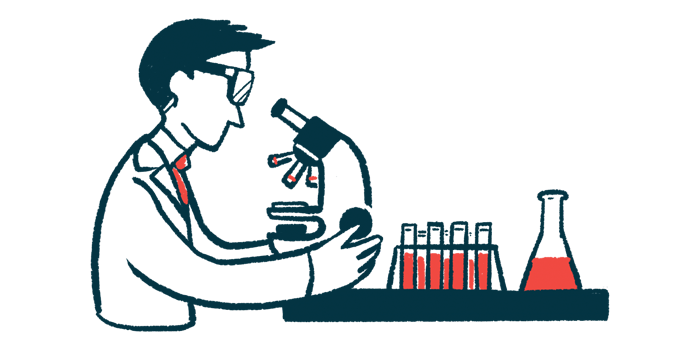Isturisa doses linked to blood cortisol levels in Cushing’s disease
Study findings should help tailor treatment to reach maximal efficacy quickly

Researchers have confirmed a relationship between increasing doses of Isturisa (osilodrostat) and decreasing levels of cortisol in the bloodstream of adults with Cushing’s disease and other forms of Cushing’s syndrome, according to a study report.
Within one hour of Isturisa intake, patients’ blood cortisol reached the lowest levels, but then rose steadily thereafter, supporting the need for two doses per day.
These findings “should help physicians tailor the treatment to reach maximal efficacy in the shortest possible time,” researchers wrote.
The study, “A preliminary model to tailor osilodrostat in patients with Adrenocorticotropic hormone (ACTH)-dependent Cushing’s syndrome,” was published in the European Journal of Endocrinology.
Isturisa designed to block activity of enzyme involved in cortisol synthesis
Cushing’s syndrome refers to a collection of conditions driven by excessive levels of the hormone cortisol in the bloodstream, also called hypercortisolism.
In Cushing’s disease, the most common form of the syndrome, a tumor in the brain’s pituitary gland results in the release of high amounts of a signaling molecule called adrenocorticotropic hormone (ACTH). Too much ACTH triggers the adrenal glands to produce excess cortisol. A tumor outside the pituitary gland can also produce ACTH, leading to ectopic Cushing’s syndrome.
Isturisa is an oral therapy designed to block the activity of an enzyme involved in cortisol synthesis, thereby lowering cortisol levels. It’s approved in the U.S. for adults with Cushing’s disease and other forms of Cushing’s syndrome for whom surgery hasn’t been effective or isn’t an option.
The starting dose is 2 mg, taken twice daily. It can be increased based on a patient’s cortisol levels, tolerability, and clinical response, up to a maximum dose of 30 mg twice daily.
“However, no study has attempted to determine whether there was a dose-response relationship between [Isturisa] and cortisol reduction,” wrote researchers in France who used clinical data to develop a model to assess how different Isturisa doses correspond to the blood levels of cortisol in adults with ACTH-dependent Cushing’s syndrome.
“The current preliminary study is a first step in trying to better understand the effect of [Isturisa] on cortisol, which should help determine the optimal dose for each patient,” the team wrote.
Model gauges blood levels of cortisol based on Isturisa concentrations
Of those who were prescribed Isturisa at least once, 18 people had ACTH-dependent Cushing syndrome, two-thirds of whom were women (66.6%). Among them, most had Cushing’s disease (88.9%), while one had ectopic Cushing’s syndrome and another had ACTH-dependent hypercortisolism of unknown cause.
The team developed a pharmacological model to gauge blood levels of cortisol based on Isturisa concentrations that led to maximum enzyme inhibition and half-maximum inhibition.
According to the analysis, blood cortisol levels declined during the first hour after taking Isturisa, from 24% for a 1 mg dose to more than 42% for a 20 mg dose. Thereafter, cortisol levels rose, with loss of treatment efficacy occurring around the 10th to 15th hour for the 1 mg and 2-mg doses. For doses above 5 mg, a moderate cortisol-suppressing effect was sustained over several hours.
“This confirms the need for two intakes per day, with one early in the morning and the other 12 hours later, in the evening,” the team noted.
For a 2 mg dose in particular, there was a median 31% decrease in blood cortisol, with a range of 0% to 67.5%. A minimum cortisol level was achieved one hour after Isturisa intake, followed by a progressive increase in cortisol levels, mainly during the 12 hours following treatment.
Our model shows that cortisol level one hour after treatment is the best indicator of future efficacy.
For a 10 mg dose, there was a median 38% decrease in cortisol, ranging from 5% to 80%, also followed by a progressive rise in cortisol.
Overall, the maximum impact on cortisol level variation in the bloodstream corresponded to the maximum levels of the drug, and a reduction in Isturisa led to an increase in cortisol.
“Our model shows that cortisol level one hour after treatment is the best indicator of future efficacy,” the researchers concluded. “Moreover, depending on the initial cortisol level and the goal to be achieved, different doses should be prescribed. We believe our model provides insight into the minimal dose necessary to decrease cortisol levels and the maximal efficacy expected for a given dose.”








